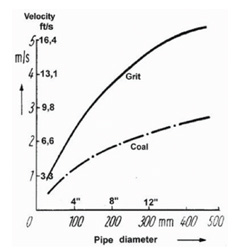Variable Frequency Drives (VFDs) are often used in wastewater stations that transport sewage. They are used to control the flow of sewage through the pumps and help wastewater treatment plants achieve the required flow. Like any piece of equipment, it must work with the whole system to be truly effective.
This article, from Horst Sturm of KSB, discusses important considerations for VFDs in wastewater applications. Some of what is discussed in this document includes:
 Check velocities – compare the velocity of the minimum required flow with the recommended minimum velocity to get a good indication of whether or not the system is working properly.
Check velocities – compare the velocity of the minimum required flow with the recommended minimum velocity to get a good indication of whether or not the system is working properly.Download the document for the full details.